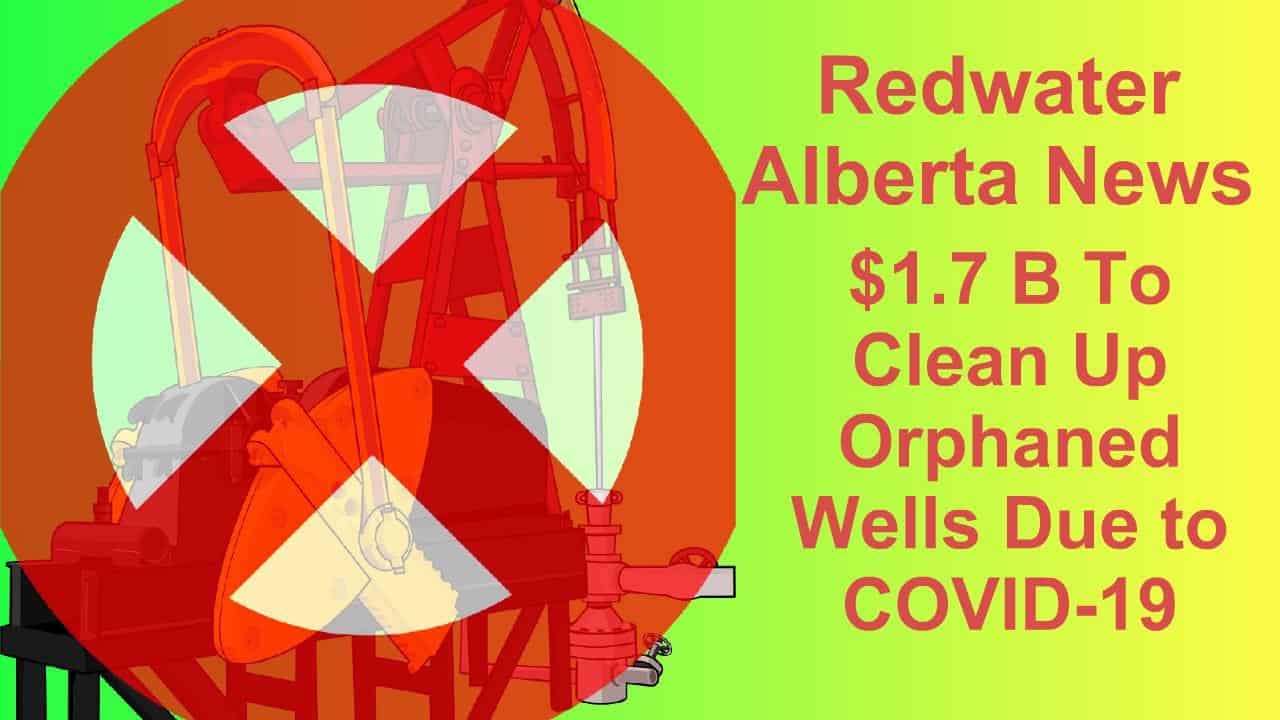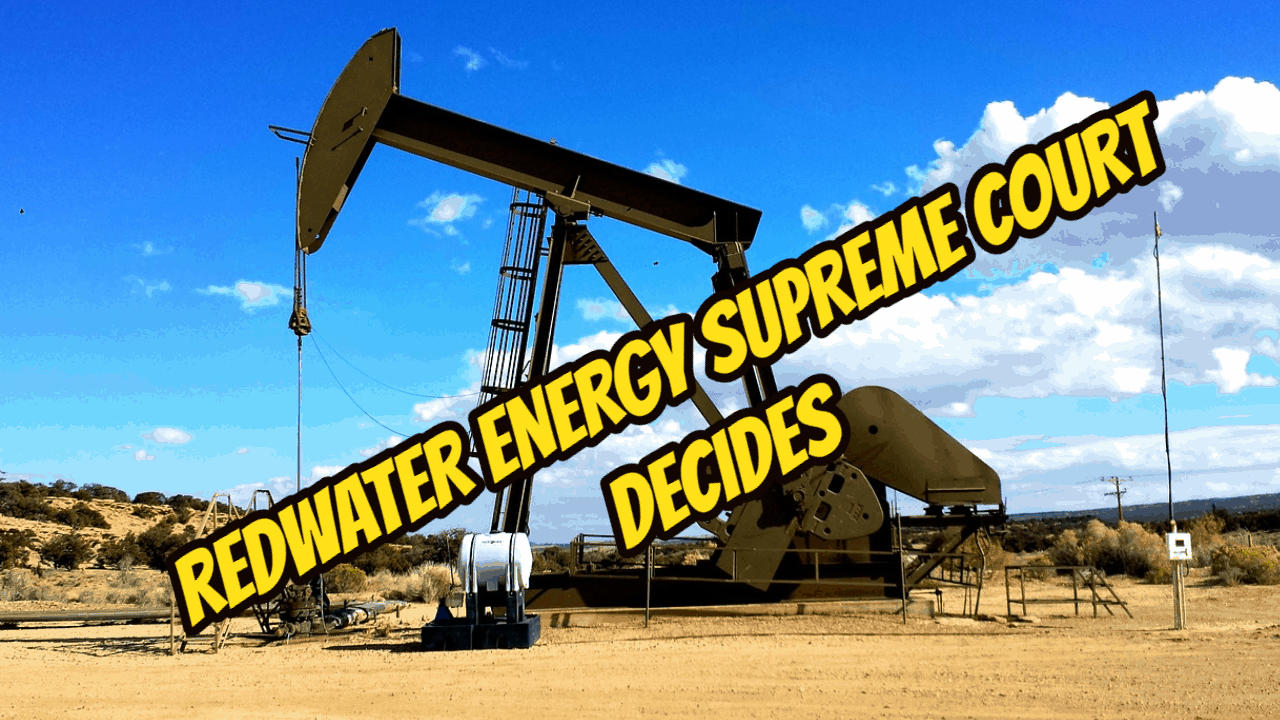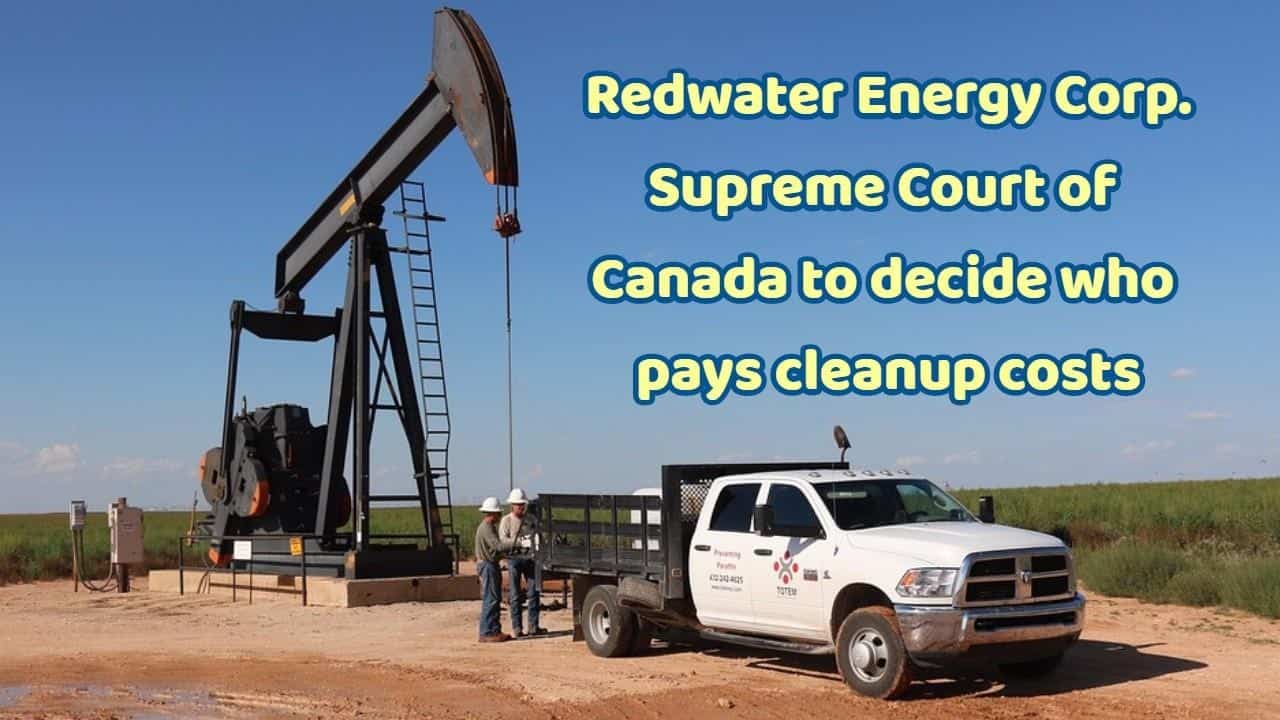 The Ira Smith Team is absolutely operational and both Ira, as well as Brandon Smith, are right here for a telephone appointment, conference calls and also virtual meetings.
The Ira Smith Team is absolutely operational and both Ira, as well as Brandon Smith, are right here for a telephone appointment, conference calls and also virtual meetings.
Stay healthy and safe everybody.
If you would prefer to listen to the audio version of this Brandon’s Blog, please scroll to the bottom of this page and click on the podcast
Introduction
When it went insolvent in 2015, Redwater Energy Corp. (Redwater Alberta or Redwater) might have been a small business, with only 19 generating wells and 90 dormant wells. However, a relatively small oil producer was responsible for a huge Supreme Court of Canada (SCC) decision.
Basically, the SCC decided in the Redwater Acase, that if a business goes belly up, its environmental obligation needs to be paid before secured creditors. I have written before on the Alberta Courts’ decisions and the SCC decision. As a result of COVID-19, the Canadian government just announced a $1.7 billion fund to create jobs in the Canadian oil patch.
Redwater Alberta history of cases
In my previous blogs, I described the Alberta court decisions. The Alberta Courts concurred with the receiver and held that the regulator’s enforcement activities to force Redwater’s adherence to its previously agreed requirements to clean up and permanently cap its oil site, in bankruptcy was not enforceable.
The Courts stated that given the bankruptcy of the company (in addition to a receivership), the Bankruptcy and Insolvency Act (Canada) (BIA) took paramountcy over the provincial law. The provincial Courts said that the BIA took paramountcy because:
- Allowed the receiver protection from the promises of Redwater Alberta as the licensee in connection with the Redwater properties disclaimed by the receiver/trustee, according to s. 14.06(4) of the BIA.
- The priority for the distribution of a bankrupt’s assets is regulated under the BIA, not provincial legislation. If the provable claim of the Regulator, an unsecured creditor, was paid in advance of the claims of Redwater’s secured creditors, that would not be the regime laid out in the BIA.
The SCC decision
In the SCC 5 to 2 judgment in the Orphan Well Association v. Grant Thornton Ltd. case, the SCC ruled that financially troubled companies like Redwater can no longer disclaim or merely bow out of properties they don’t want. In this situation, non-producing oil wells, when abandoned or orphaned, leave the resulting ecological cleaning to Alberta’s Orphan Well Association. It is a non-profit operating for the Alberta Energy Regulator.
What the SCC decision in the case of the Redwater Alberta receivership means is that the costs of properly and permanently sealing an oil well that is to be abandoned is a first ranking charge against the producer’s assets. In the Redwater case, the receiver had to turn over the proceeds (about $600,000) from the asset sales to the Alberta regulator. There was absolutely nothing left for any other creditor, either secured or unsecured.
This case was obviously difficult and contentious, given that it was a 5-2 decision and not unanimous. The majority decision stated that:
- The regulator’s use of its provincial powers is not in conflict with the BIA to trigger the doctrine of federal paramountcy.
- Section 14.06(4) of the BIA deals with the personal liability of receivers and trustees and does not let a trustee ignore the environmental liabilities of the estate.
- The regulator is not asserting any claims provable in the bankruptcy.
- There is no attempt by the regulator to upset the scheme of priorities stipulated by the BIA.
- There is not a conflict by the regulator tagging the Redwater receiver as a licensee under Alberta legislation.
The Supreme Court decision goes on to say that the rules cannot be ignored just because there is a bankruptcy. Insolvency professionals must abide by valid provincial laws in administering corporate bankruptcy. It also found that receivers and trustees must:
- conform with non-financial requirements the insolvent company must still adhere to that do not create a provable claim in the insolvency administration; and
- Adhere to the parts of the provincial legislation that does not go against the BIA, notwithstanding that it might prove harmful to the position of one or more groups of creditors.
COVID-19 and orphaned wells
Near the end of March 2020, Finance Minister Bill Morneau said that help for the oil and gas industry would be announced. This industry has been hit by two different factors:
- Reduced demand due to people self-quarantining because of COVID-19 and therefore there is less demand for oil and gas.
- The price battle between Russia and Saudi Arabia. Oil on the world market is at an all-time low. At one point, a barrel of Canadian oil was selling for less than $5. The industry cannot operate with oil prices that low.
As a result, there have been massive job losses in British Columbia, Saskatchewan and Alberta oil patches. As well, the regulators do not have the money to reclaim and permanently seal off the abandoned orphaned wells. It is currently estimated that the total cost could be in the $8 billion range.
On Friday, April 17, Prime Minister Justin Trudeau announced that the federal government will invest at least $1.7 billion to the orphaned well cleanup. The money is to be used to create oil patch jobs to allow for the environmental cleanup.
So COVID-19 or coronavirus, has forced the Canadian government to create this support for the Canadian oil and gas industry. It will create jobs badly needed and allow for the cleanup of some orphaned oil wells.
Details of the support package have not been released. Presumably, the legislation will have to be drafted and passed in the House of Commons. No doubt, more information will come out in the coming days or weeks.
Summary
The Ira Smith Team family hopes that you and your family members are remaining secure, healthy and well-balanced. Our hearts go out to every person that has been affected either via misfortune or inconvenience.
We are all citizens of Canada and we need to coordinate our initiatives to stop the spread of the coronavirus. Social distancing and self-quarantining are sacrifices that are not optional. Families are literally separated from each other. We look forward to the time when life can return to something near to typical and we can all be together once again.
Ira Smith Trustee & Receiver Inc. has constantly use clean, safe and secure routines in our professional firm and we continue to do so.
Revenue and cash flow shortages are critical issues facing entrepreneurs and their companies and businesses.
If anyone needs our assistance, or you just need some answers for questions that are bothering you, feel confident that Ira or Brandon can still assist you. Telephone consultations and/or virtual conferences are readily available for anyone feeling the need to discuss their personal or company situation.
Are you now worried just how you or your business are going to survive? Those concerns are obviously on your mind. This pandemic situation has made everyone scared.
The Ira Smith Team understands these concerns. More significantly, we know the requirements of the business owner or the individual that has way too much financial debt. You are trying to manage these difficult financial problems and you are understandably anxious.
It is not your fault you can’t fix this problem on your own. The pandemic has thrown everyone a curveball. We have not been trained to deal with this. You have only been taught the old ways. The old ways do not work anymore. The Ira Smith Team makes use of new contemporary ways to get you out of your debt problems while avoiding bankruptcy. We can get you debt relief now.
We look at your whole circumstance and design a strategy that is as distinct as you are. We take the load off of your shoulders as part of the debt settlement strategy we will draft just for you.
We understand that people facing money problems require a lifeline. That is why we can establish a restructuring procedure for you and end the discomfort you feel.
Call us now for a no-cost consultation. We will listen to the unique issues facing you and provide you with practical and actionable ideas you can implement right away to end the pain points in your life, Starting Over, Starting Now.
The Ira Smith Team is absolutely operational and both Ira, as well as Brandon Smith, are right here for a telephone appointment, conference calls and also virtual meetings.
Stay healthy and safe everybody.
[monkeytools msnip=”https://monkeyplayr.com/playr.php?u=5173&p=22151″]



